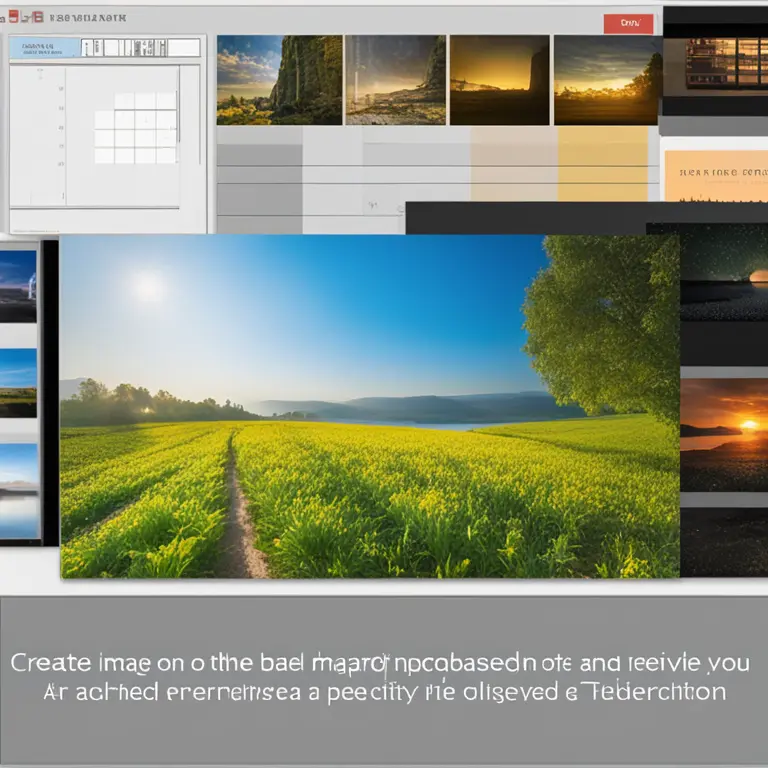
Meditate Away Anxiety: Simple Techniques for Calm
Discover practical meditation techniques designed to ease anxiety and cultivate serenity in everyday life.
article by Hina Kurosawa
Introduction to Meditation and Anxiety
In our fast-paced world, the prevalence of anxiety has motivated many to seek solace in meditation. Engaging in meditation can significantly reduce stress hormones while fostering a sense of calm. This article will guide you through effective meditation practices known to alleviate anxiety. By integrating these methods into your daily routine, you can embark on a journey toward mental tranquility and emotional balance.

The Power of Breathwork
Breathwork lies at the heart of numerous meditation practices. Diaphragmatic breathing, or belly breathing, activates the body's relaxation response, counteracting anxiety's fight-or-flight mechanism. Inhale deeply through your nose, allowing your abdomen to rise. Hold for a moment before exhaling slowly through the mouth. This technique oxygenates the body and steadies the mind, serving as a cornerstone of stress management.

Mindfulness Meditation
Mindfulness meditation is a practice where focus is placed on the present moment. Sitting quietly, observe your thoughts, sensations, and feelings without judgment. By acknowledging and releasing each thought, you can minimize rumination—a common trigger for anxiety. Research supports mindfulness's efficacy in reducing stress and enhancing overall well-being, making it a vital component of modern anxiety-reduction strategies.

Body Scan for Releasing Tension
The body scan technique is a restorative practice that couples mindfulness with physical relaxation. By mentally scanning from head to toe, you can identify areas of tension. Consciously releasing this tension promotes relaxation. Systematically move your attention through each body part, breathing into any discomfort, and exhaling to release it. This method effectively diminishes anxiety by uniting mind and body awareness.

Guided Visualization
Guided visualization is a potent tool for anxiety relief. It involves immersing yourself in a mental image of a peaceful place or scenario. Using a scripted guide or a personal scenario, vividly imagine a setting that evokes calm. Engage all your senses to deepen the experience. Studies suggest that regular practice can improve mood and reduce anxious feelings by creating psychological distance from stressful thoughts.
Mantra Meditation
Repeating a calming word or phrase, a 'mantra', can serve as a meditation anchor, providing a simple yet profound way to maintain focus and still the mind. Select a soothing word or phrase that resonates with you personally. Silently repeat your mantra during meditation to curtail intrusive thoughts and maintain a serene state of mind. This practice has been embraced widely for its accessibility and effectiveness in stress reduction.
Integrating Meditation into Daily Life
To truly harness the anxiety-reducing power of meditation, consistency is key. Dedicate a daily time slot for practice, even if it's just for a few minutes. Additionally, integrate mindfulness into daily activities such as walking or eating to cultivate a meditative mindset throughout the day. Over time, these practices will contribute to a more peaceful, anxiety-resistant way of being.
Published: 2/12/2024
Modified: 2/12/2024
More predictions
Come back here soon to learn more about yourself and your future


Varieties of Meditation Techniques for Modern Practitioners
Explore a range of meditation methods to enhance mindfulness and tranquility in your daily life.


Awakening Your Third Eye with Meditation
Learn potent meditation practices to activate your third eye for heightened intuition and perception.


Calming the Mind: Meditation Techniques for Stress Relief
Discover effective meditation techniques to manage stress, improve focus, and enhance overall well-being in our fast-paced world.